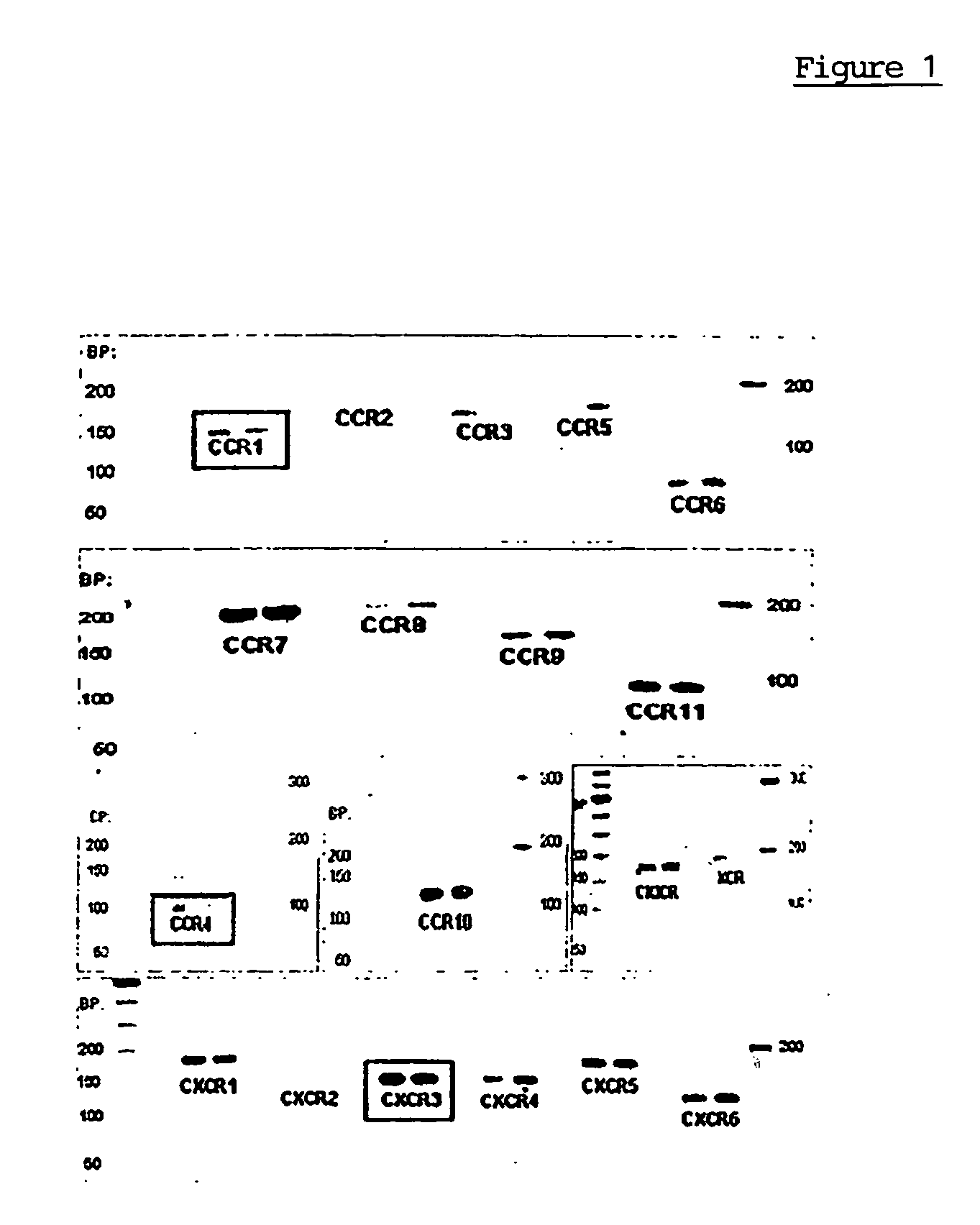Use of chemokines, and pharmaceutical preparations containing the same
- Summary
- Abstract
- Description
- Claims
- Application Information
AI Technical Summary
Benefits of technology
Problems solved by technology
Method used
Image
Examples
example 1
[0047] Isolating and Culturing Human Mesenchymal Stem Cells
[0048] Human mesenchymal stem cells (MSCs) were isolated as follows using a previously described protocol for obtaining MSCs from the bone marrow.
[0049] At most 3 ml of bone marrow punctate are mixed with 10 ml of PBS and centrifuged for 10 min at 310 g at room temperature. The cell pellet is resuspended and once again washed with PBS (8000 mg of NaCl / l 200 mg of KCl / l, 1150 mg of Na2HPO4 / l, 200 mg of KH2PO4 / l). The cells are taken up in 20 ml of DME medium (containing 10-20% FBS, 2% HEPES, 4 mM L-glutamine, 100 U of penicillin / ml, 100 μg of streptomycin / ml). In each case, 5 ml of this cell suspension are loaded onto 20-ml of a Percoll density gradient having a density of 1.073 g / ml. The cells are centrifuged at 900 g for 32 min.
[0050] The upper phase is transferred to a new centrifuge tube. After 2.5 times the volume of PBS has been added, the mixture is centrifuged once again at 310 g for 6 minutes. The cell pellet is t...
example 2
Analyzing Gene Expression for Detecting the Chemokine Receptors
[0053] The isolated, expanded and verified human mesenchymal stem cells express chemokine receptors. This was demonstrated for several human patients (n=3) by means of RT-PCR as follows:
[0054] a. Isolating the Total RNA
[0055] Tri Reagent LS™ is used for isolating the total RNA. The MSCs are cultured to confluence. After the cell culture medium has been discarded, the cell lawn is overlaid with 0.4 ml of Tri Reagent LS™ per 10 cm2 of growth area in order to lyse the cells. The lysate is transferred to a sterile reaction vessel and incubated at room temperature (RT) for 5 minutes. The lysate is treated with 0.1 ml of bromochloropropane (BCP) per 0.75 ml of Tri Reagent LS™, after which it is shaken for 15 seconds and incubated at RT for 10 minutes. A subsequent centrifugation for 15 minutes at 4° C. and 12 000 g results in phase separation. The aqueous phase is taken off in 200 μl aliquots and transferred to a reaction ...
example 3
[0061] In order to treat a joint surface which is markedly deformed arthritically, small communication channels are first of all prepared between the bone marrow space and the joint cavity by means of drilling a number of fine bore holes (1-2 mm). After that, a wool-like polymer construct (polyglycolide), combined with hyaluronic acid and chemotactically acting chemokine (CCL19), is glued, and fitted, over the joint surface using fibrin or acrylic adhesive.
PUM
| Property | Measurement | Unit |
|---|---|---|
| Biodegradability | aaaaa | aaaaa |
Abstract
Description
Claims
Application Information
 Login to View More
Login to View More - R&D
- Intellectual Property
- Life Sciences
- Materials
- Tech Scout
- Unparalleled Data Quality
- Higher Quality Content
- 60% Fewer Hallucinations
Browse by: Latest US Patents, China's latest patents, Technical Efficacy Thesaurus, Application Domain, Technology Topic, Popular Technical Reports.
© 2025 PatSnap. All rights reserved.Legal|Privacy policy|Modern Slavery Act Transparency Statement|Sitemap|About US| Contact US: help@patsnap.com


